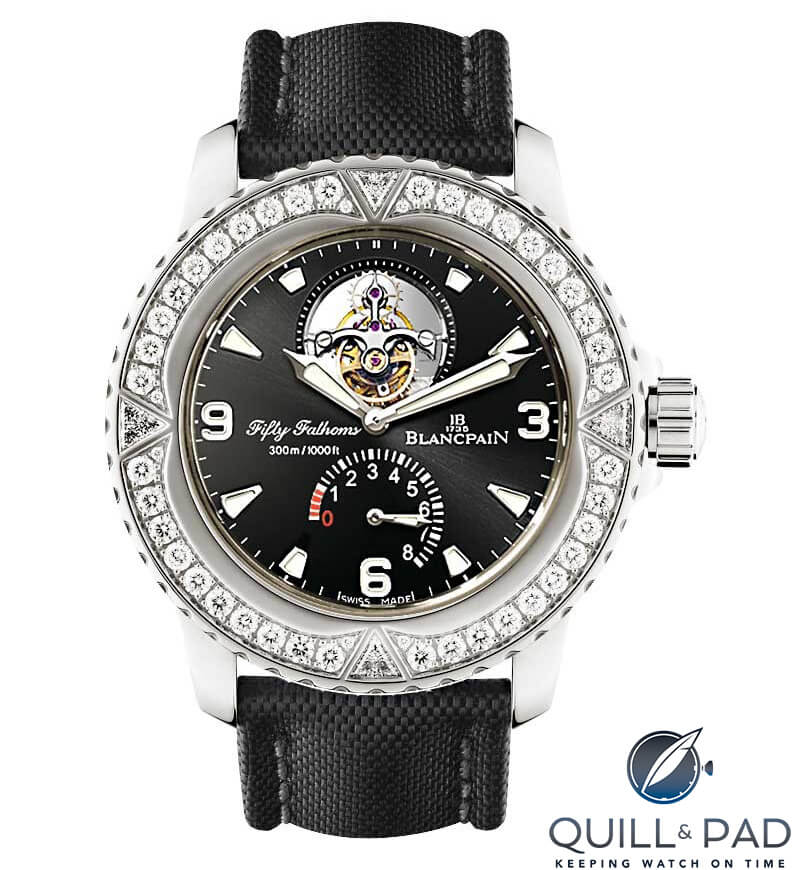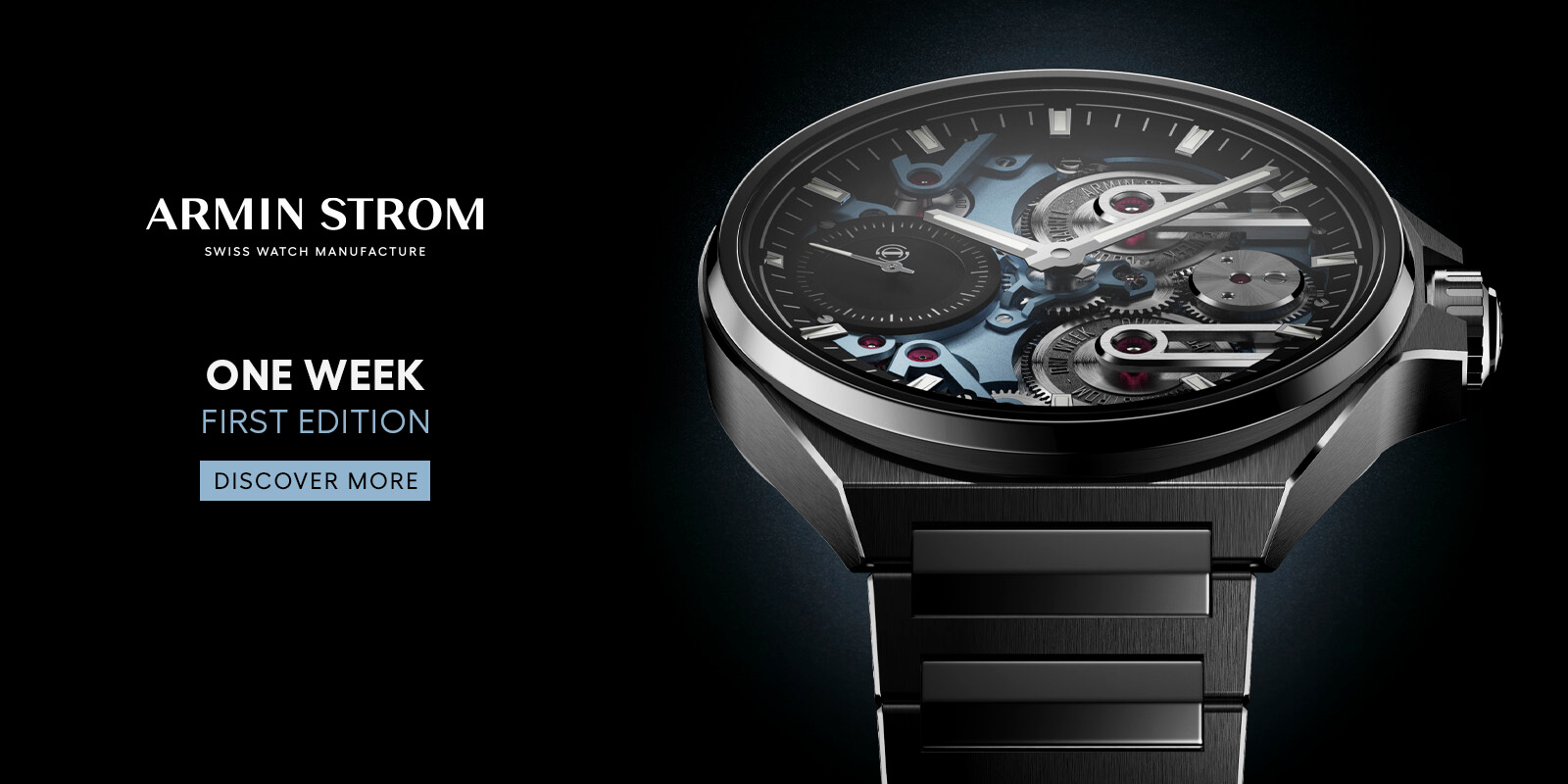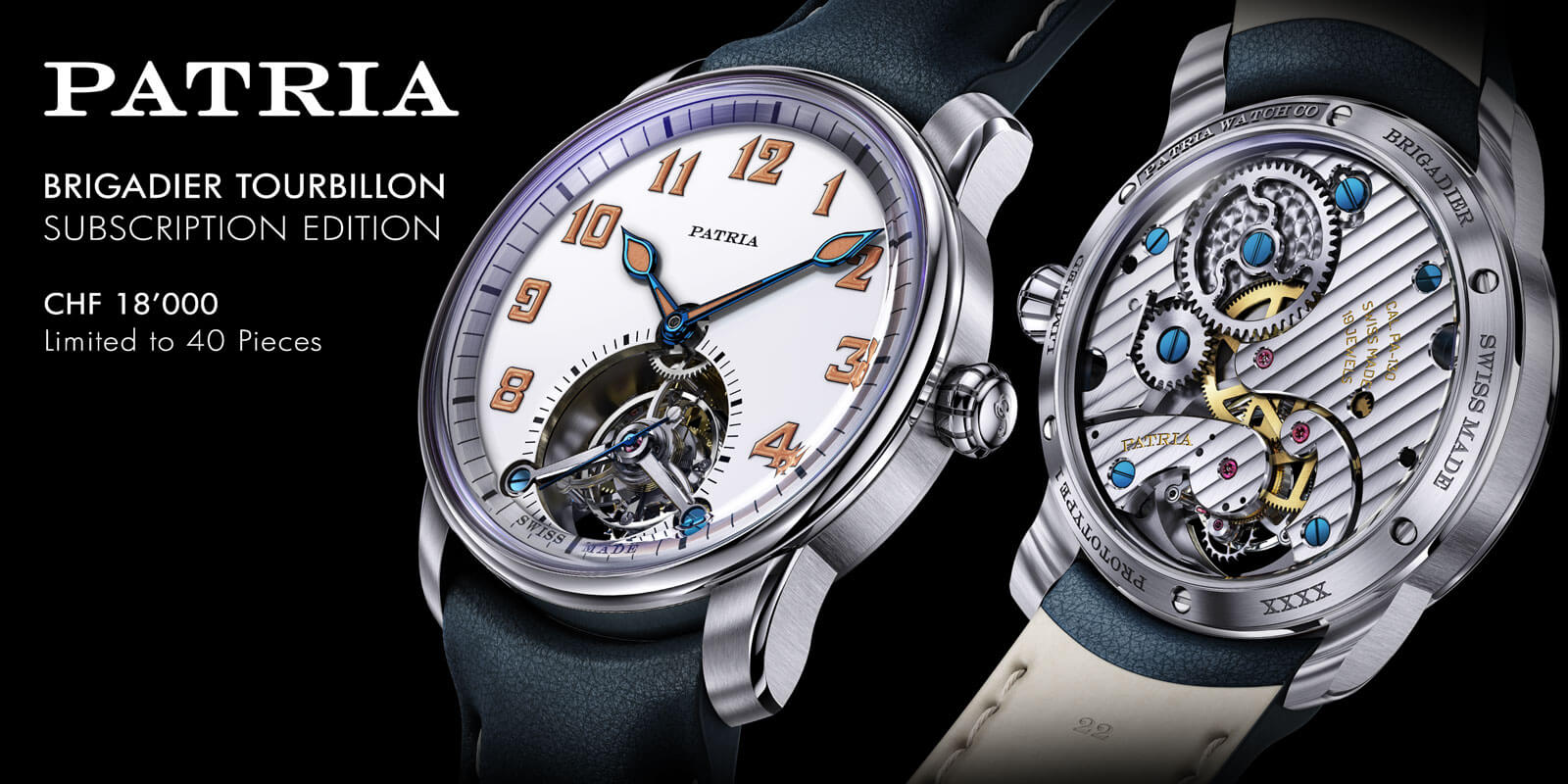Why a Dive Watch should Never be Haute Horlogerie
by Martin Green
The dive watch can be seen as the off-road car of the watch world. Right after World War II, the world of diving was going through rapid developments. A leap in technology allowed humans to dive longer and deeper and enabled us to finally explore a part of our planet we know so little about.
Today we have a very romantic image of those days, but although technology was improving, divers entered a very hostile environment that was not without dangers. A watch was an essential tool for those divers. It allowed them to track both the overall duration of the dive and also if critical decompression stops were necessary.

Original Blancpain Fifty Fathoms from 1953
As it was a tool, divers often took them off when they were not diving, then opted for a smaller and thinner timepiece. While we now may consider some of the early dive watches almost cute in terms of size, back then, they were considered substantial.

Jean-Jacques Fiechter in his natural habitat
As more time passed and technology advanced even further, diving became more of a sport that an increasing number of people practiced. As they needed a watch to do so safely back then, more dive watches came on the market.
These were the adventurous types, and like off-road cars, which allow you to drive deep into the jungle (remember the Camel Trophy?), dive watches will enable you to explore the underwater splendor.
————————————————————————————————————–
—————————————————————————————————–
Like their automotive counterparts, dive watches were made for a purpose, where form follows function.
Two things changed this: First, the introduction of the dive computer, which could do everything a watch could do, and more. Suddenly, the dive watch was playing second fiddle, now a backup for when the dive computer would stop functioning during the dive.
The second thing that changed the perception of the dive watch was the renaissance of mechanical watchmaking after the quartz crisis. The mechanical watch became a status symbol, an object of desire, an art form, and as it was not a necessity anymore, it changed our perception of it.
What was once the off-road car of the watch world slowly but surely morphed into the SUV (Sports Utility Vehicle). Cars originally designed to tackle any obstacle and take you to the most remote areas in the world, were turned into comfortable cars to take the kids to soccer.
The dive watch met a similar fate as it became, for the most part, a lifestyle accessory. Both the SUV and the dive watch evoke a desire for an active and adventurous lifestyle.
SUVs allow their owners to dream that they have to wait for a troop of elephants to cross the path on the Serengeti while they are actually in traffic on their dreadful daily commute.
The dive watch transforms (in the imagination) a swim in the hotel pool into a scene from Jacques Cousteau’s ‘Silent World’ documentary.
A new type of dive watch was born, one in which form no longer follows function.

Reservoir Hydrosphere Bronze The Greg Lecoeur Edition
In essence, a dive watch can never be haute horlogerie, because that compromises the goal it was designed for. Granted, I am taking the liberty of stretching the term haute horlogerie a little wider than some, but in a dive watch, you don’t want a refined, ultra-slim movement; you want something sturdy and robust.
—————————————————————————————————–
—————————————————————————————————–
Complications can be added as long as they don’t introduce additional risks to the dependability of the movement or clutter the legibility. A date function is often appreciated, although pointless for diving itself, and only a chronograph can be of extra value.
However, some brands even introduced dive watches with tourbillons or a perpetual calendar. While they look great on the surface, below the water line, it is all about keeping things as simple as possible so that the chances of something going wrong are limited.

Oris Aquis Pro 4000m

Squale diver watches in carbon fiber and titanium
In terms of material for cases and bracelets, only a few make sense. Stainless steel, titanium, and bronze are obvious choices, but carbon fiber can also be of benefit as this is very strong and light. Squale, a brand with a rich history in making dive watches, uses it in some of its watches.
Ironically, these watches are not very light, as the brand forges the material around a metal container, using it for its strength and not its lightness, as weight works differently underwater.

Blancpain Fifty Fathoms Tourbillon 8 Days 45mm with diamond-set bezel
Precious metal can be used, but that’s about the same as putting very expensive shiny rims on your off-road vehicle. They may look great at first, but if they are driven off-road they are bound to scratch.
Also, precious metal is much softer than stainless steel or titanium, so there are no advantages, only disadvantages.
—————————————————————————————————–
—————————————————————————————————–
To raise the esteem of dive watches and underscore a sense of performance and adventure, many brands increased water resistance to ridiculous numbers. Most recreational divers never go deeper than 40 meters, and the world record for the deepest scuba dive stands at 332 meters.
So when your dive watch is water resistant to over 300 meters, that is overcompensating.

Rolex Deepsea, water resistant to 3,900 meters/12,800 feet
It also makes people lazy. As their watch has such a high water-resistant rating, they usually don’t get the rubber seals tested often enough. The rubber seals do dry out and when they do, moisture can penetrate, even while washing the dishes.
From a technical perspective, watches with high water resistance ratings are fascinating, as it requires considerable effort and expertise to achieve this. The same as it is impressive that an SUV with the aerodynamics of a garden shed can go from 0 to 60 in 5.5 seconds and corner reasonably well.

Richard Mille RM 028
The ridicule of a ‘haute horlogerie’ dive watch goes even further, as their price tags are often in no relation to the rest of the gear recreational divers use, especially when you consider their limited function. It is not that difficult to pick a high-end dive watch and have it cost more than all the gear needed for diving.
Granted, you can also wear your watch to dinner afterward as a badge of honor, which you probably won’t do with your wetsuit.
—————————————————————————————————–
—————————————————————————————————–
The good fortune is that we all enjoy a hobby where common sense plays little to no role. We all share a love for obsolete ways of keeping time, and that passion comes with us underwater as well. I’m not bashing expensive dive watches, it is a declaration of love.
Overly expensive dive watches are like the Lamborghini LM002, a capable off-road car with the V12 engine of the Countach. Ridiculous in every way, shape, and form and yet so lovable and desirable.
I ‘too, have enjoyed the glance at an overly expensive watch while diving, feeling myself a little bit like James Bond in ‘Thunderball,’ ‘Never Say Never Again,’ or The Spy Who Loved Me.’

Oris Aquis Pro 4000m
At Geneva Watch Days 2023, my best of show was the outrageous Oris Aquis Pro 4000m. While these watches are a far cry from the original tool watches the diving pioneers used in various ways, they form a rather tempting category within the world of watches.
While I still stand by my point that a dive watch should never be haute horlogerie, that doesn’t mean that I deny myself the pleasure of enjoying the unique timepieces that come forward when brands do what they perhaps shouldn’t.
You might also enjoy:
Blancpain Fifty Fathoms Automatique: Time to Move on From the Rolex Submariner?
Blancpain Fifty Fathoms: Story Of The World’s First Diving Watch (Video)
Omega Seamaster Planet Ocean: A Modern Design Icon
Deeper, Further, Faster: Why do Some Dive Watches have Helium Escape Valves?
The Diving Bezel: The Most Versatile Watch ‘Complication,’ Even If You’re Not A Diver
A Comprehensive Look At Mechanical Depth Gauge Watches
Leave a Reply
Want to join the discussion?Feel free to contribute!







On the contrary, adding an annual or perpetual calendar increases the water tightness of the watch.
I can’t tell if you are being serious or joking Ilan.
Regards, Ian
I’m absolutely serious! A large proportion of water tightness failure is due to user error, in particular, incorrectly screwing down the crown (or analogous mechanism) after winding or adjustment. This is the reason why all mechanical dive watches should have automatic movements. Similarly, dive watches with date should have annual or perpetual calendars to reduce the number of times the crown is unscrewed.
Thanks for that Ilan, your explanation makes sense to me.
Regards, Ian
Thanks Ian! On the other hand, I doubt that his would ever be advertised for the reason I mentioned. You don’t want to blame the customer :).
It would be simpler to add a crown protector like Ball or go really old school and add a canteen style over cover.
Yes, they can. Better movements and overall finishing, and still tough.
Although my comment is not about watches, I do have an interest as I own a huge amount of them. Casio has always been my go to for affordability. I want to comment on the good writing and good read. So many articles are written poorly nowadays with gramer errors ect. It was enjoyable to read.
Even people that know nothing of wristwatches consider a Rolex Submariner a luxury piece of “haute horology”. Much of the history of wristwatches is about reliability in extreme conditions; magnetism, temperature, pressure, etc.
Do I need 20 bar water resistance in daily life? Well,no. I could just check my phone.